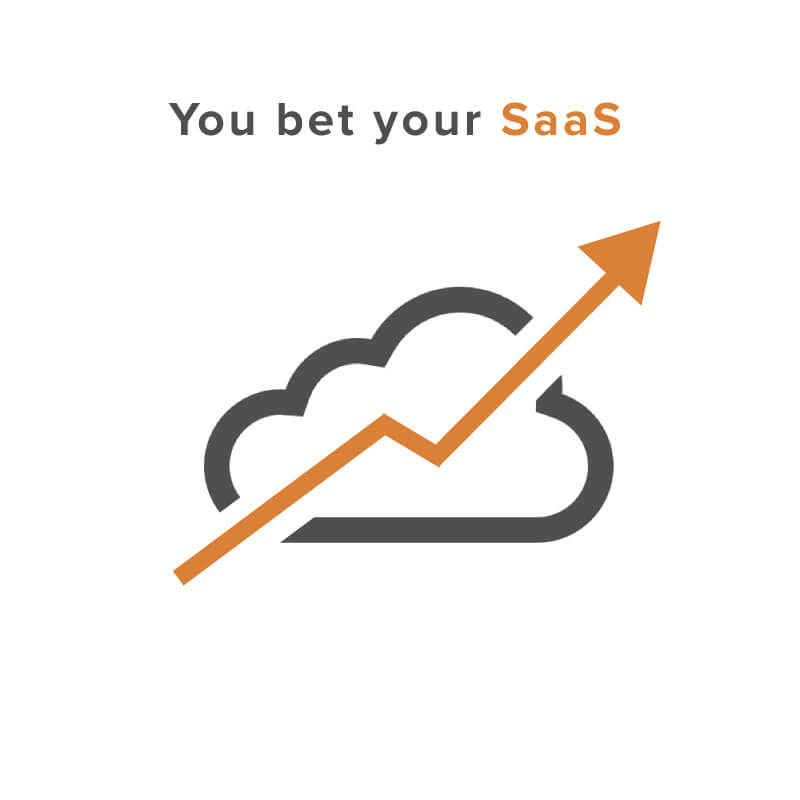We’ve been here before. It was circa 1998, and big investment banks, hedge funds, and day traders were all trying to make sense of this thing called the Internet. That it was coming was not in doubt, but the speed of its arrival and its impact was. “We had to decide whether change was going to be earth-shattering, or come at a gentle clip,” says Karl Keirstead, a software analyst with Deutsche Bank.
Keirstead believes we’re in a similar disruptive period today with cloud computing and SaaS. CIOs are fundamentally changing how they build their tech infrastructure and how they consume software. “Once again, people are trying to decide whether the changes these technologies bring will be rapid and enormously disruptive –- or a slow burn,” Keirstead says. “Remember, this isn’t the railroads where opinion falls within a very narrow range. Growth software, and SaaS in particular, is not a static market –- there is a wide gap between the bulls and the bears.”
That gap, Keirstead says, explains in large part the blood-letting we’ve seen in the markets, especially for recently public SaaS companies like ServiceNow, Splunk, Tableau, and Workday that have been getting hammered in recent months by investors. Keirstead hasn’t seen anything this bad since 2008.
“The companies that put up good numbers are down 5%,” he says. “The companies that miss are down 10%, 20% or much more. These are very unusual times, and it is making the privates that have IPO aspirations nervous.”
Going public is always a time where nerves get frayed, no matter the macro conditions. You might ascribe some of the market’s recent pullback in high-growth SaaS companies to the Federal Reserve’s changing monetary policy –- to the specter of rising interest rates offering an alternative to equities for investors. You could also blame it on sluggish IT buying. The chaos in Ukraine. Or maybe it has been that valuations for some of these SaaS companies did get ahead of themselves.
But you can’t blame it on the fundamentals of most of these young software companies, or the trend that is the engine of their growth –- delivering software as a service from the cloud, says Brendan Barnicle, a senior research analyst covering enterprise software for Pacific Crest Securities. “The fundamentals have been great,” he says. “And every survey that I do, shows more and more adoption. Within individual stocks you can have a debate, but not with the trend.”
Analysis from Keirstead’s group at Deutsche Bank underscores that belief in the underlying trend. During the last decade the SaaS category grew 11X in market cap value, and its share of the total software market capitalization grew from 2% to 14%, a Deutsche Bank reports states. Drawing that line forward, Deutsche Bank expects the SaaS category market cap to reach ~$600bn by 2020 with a share of ~38% of the total [market cap] of software.
In explaining the recent listless performance of many software companies — legacy and newcomers alike — one IT executive had this to offer: “The only real thought I have is that cloud is having a real impact on traditional economic models. The traditional technology players have to struggle with cannibalization of core business models while they embrace new operating levels the cloud brings. What I’m seeing is that IT is getting better, faster and cheaper if you can ride the waves of software-as-a-service, platform-as-a-service, and infrastructure-as-a-service.”
The question Wall Street (and plenty of CIOs) seems to be grappling with isn’t whether the cloud SaaS trend is for real -– no debate there –- or whether these SaaS companies will control an increasing portion of the market and the overall market capitalization of all software companies. They will.
It all goes back to Keirstead’s observation: that, just as with the Internet circa 1998, it’s a question of how fast will it happen and how monumental the change. “We feel like this shift is still in the early stage, and we feel pretty bullish about the growth to come,” Keirstead says. So gentle clip or earth shattering? “Well, the last time we faced something similar,” he says, “that sure turned out to be earth-shattering.”
- a16z Podcast: The Art of the Regulatory Hack
- a16z Podcast: On Corporate Venturing & Setting Up ‘Innovation Outposts’ in the Valley
- a16z Podcast: Connectivity and the Internet as Supply Chain
- a16z Podcast: Infrastructure… is Everything
- a16z Podcast: Open vs. Closed, Alpha Cities, and the Industries of the Future



